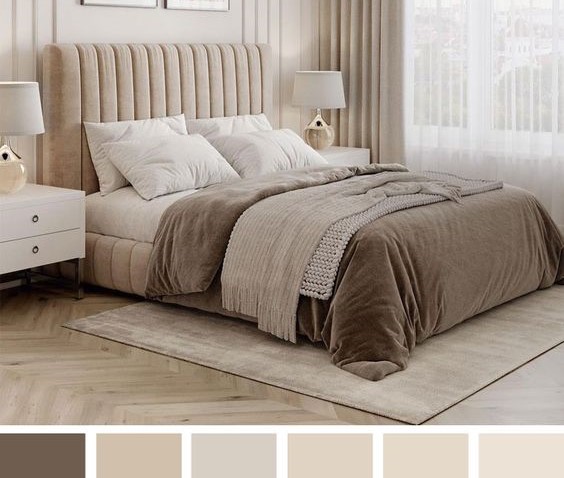Termites are small, social insects that feed on cellulose-based materials such as wood, paper, and cardboard. They can cause extensive damage to homes, furniture, and other structures, which can be costly to repair. Termites are hidden pests which are difficult to detect because of where they live and find food, that can cause major damage to your home’s structure. You can have thousands of termites living in your walls with little to no sign of their presence. However, all the while, they’re chewing through the wood, potentially leaving behind damage that’s expensive to repair.Termites are important in two ways. They are destructive when they feed upon, and often destroy, wooden structures or vegetable matter valuable to humans.Some termites feed on living plant materials and can become serious crop pests. Termites are also extremely beneficial in that they help to convert plant cellulose into substances that can be recycled into the ecosystem to support new growth.
Moisture:
Termites require moisture to survive and thrive, so any areas of excessive moisture around your home can attract them. Some common sources of moisture include leaky pipes, poorly ventilated crawl spaces, and standing water. To prevent termites, it’s important to fix any leaks, improve ventilation, and remove standing water.Wall termites need moisture to survive, so as they inhabit the interior of your walls, they will bring some moisture inside with them. This moisture could react with your painted rywall surfaces, causing bubbes, flakes, peeling or cracks.
Signs of Termites in Walls
- You See Tiny Pinholes
- You Notice Mud Tubes
- Your Wall Paint Is Bubbling or Flaking
- Your Wall Sounds Hollow
- You See Dust Near the Bottom of the Wall
- Your Wood Trim Is Damaged
- Your Foundation Has Shifted
What to Do If You Have Termites in Your Walls
Ignoring the early signs of termites in drywall can cause significant damage down the road. It is best to immediately address a termite infestation. Below are a few options for what to do if you have signs of a problem.
- Set up termite baits.
- Use a termiticide.
- Call a termite exterminator.
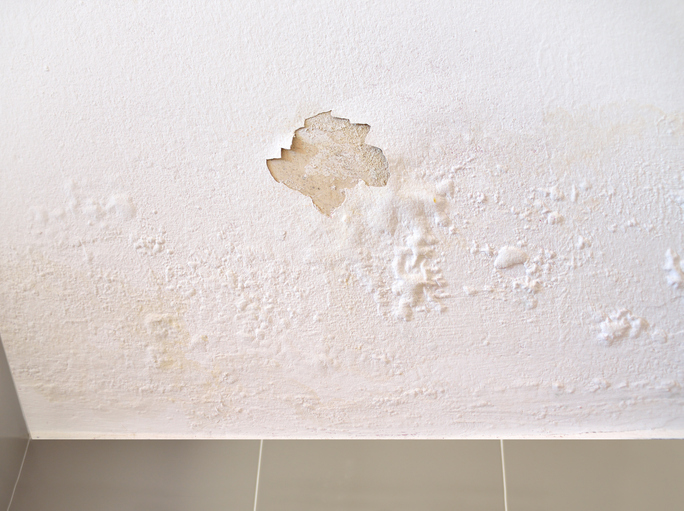
Wood – to – soil contact:
Termites can easily access wood if it is in direct contact with soil. This can occur with wooden decks, fence posts, and even firewood stacked against your home. To prevent termites, it’s important to keep wooden structures at least 6 inches above the soil or use treated wood that is resistant to termites. Termites are the most important soil macro fauna, assisting in the alteration of soil physicochemical properties.Termite infestation is usually not apparent until severe damages have incurred. They live in dark, humid and protected environment, which make them so hard to find – until it’s too late.As termites devour their way through wood from the inside, it can be rather challenging to detect a termite infestation but there are some tell-tale signs that indicate their presence.
Signs of Termites in contact with Wood – to – Soil
- Tunnels in the wood
- Foundation damage
- Floor damage
- Tight fitting door or hard to open window
- Termite droppings
- Papery or hollow sounding timber
- Garden damage
How to Get Rid of Termites in the Soil?
- White Vinegar
- Insecticidal Soap
- Cayenne Pepper
How to Get Rid of Termites in Wood?
- Sunlight Exposure
- Oil Treatment
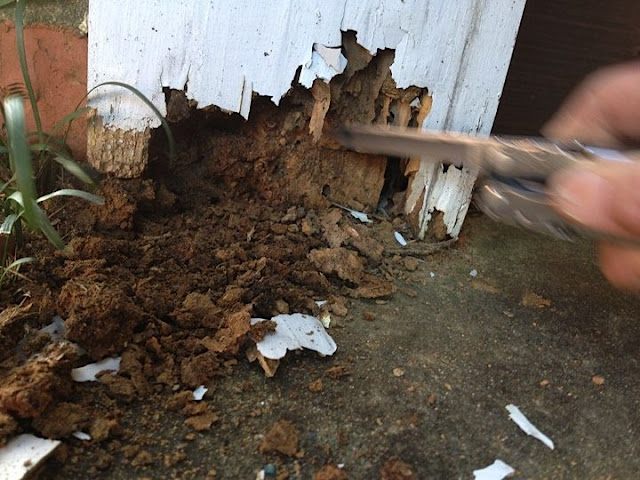
Cracks and Gaps:
Termites can enter your home through even the smallest cracks and gaps, such as those found around pipes and utility lines. To prevent termites, it’s important to seal any cracks and gaps around your home’s foundation, windows, and doors. While termites cannot damage concrete foundations, they can damage nearby wood sources. Termites can cause significant damage to structural supports made of wood, especially where there is direct wood-to-ground contact. In most cases, it is best to remove wood-to-ground contact and use concrete supports below the wood.Termites chew away at the plaster or wood surfaces, leaving gaps in the doors and walls. Always keep an eye out for such cracks and seal them as soon as possible. Termites most commonly attack the sides of roofs, windows, vents, and doors.
Signs of Termite prevention in Cracks and Gaps
- Reduce soil-to-wood contact around your house
- Seal gaps caused by settling
- Keep flying termites away during swarming season
- Remove food sources
- Get regular termite inspections
- Keep moisture away from your foundation
- Keep plants away from your home

Old or damaged wood:
Termites are attracted to old or damaged wood because it is easier for them to consume. To prevent termites, it’s important to regularly inspect your home for any signs of rot or decay, and to replace any damaged wood immediately.

How do I Know I Have Termites ?
The first step in prevention is to be on the alert for termites. Termites rarely emerge from soil, mud tubes or food sources through which they are tunneling. Most people are not aware they have termites until they see a swarm or come across damage during construction. Some of the ways to discover if you have termites are listed below:
- Examine by probing , exposed wood for hollow spots (using a flathead screwdriver or similar tool).
- Identify termite swarms (sometimes ants swarms are mistaken as Termites).
Ants
- Front wings longer than the hind wings
- Antennae bent at ninety degree angle
Termites
- Wings are roughly equal in length
- Antennae are straight; may droop

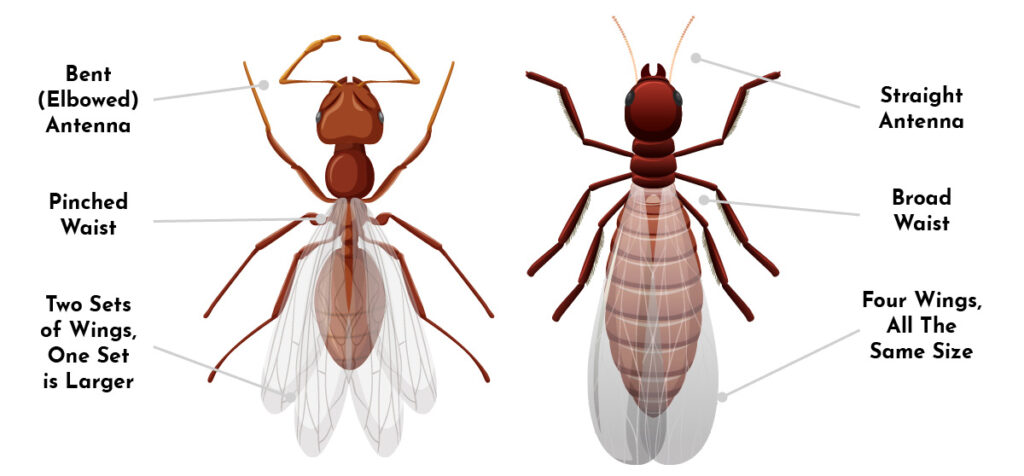
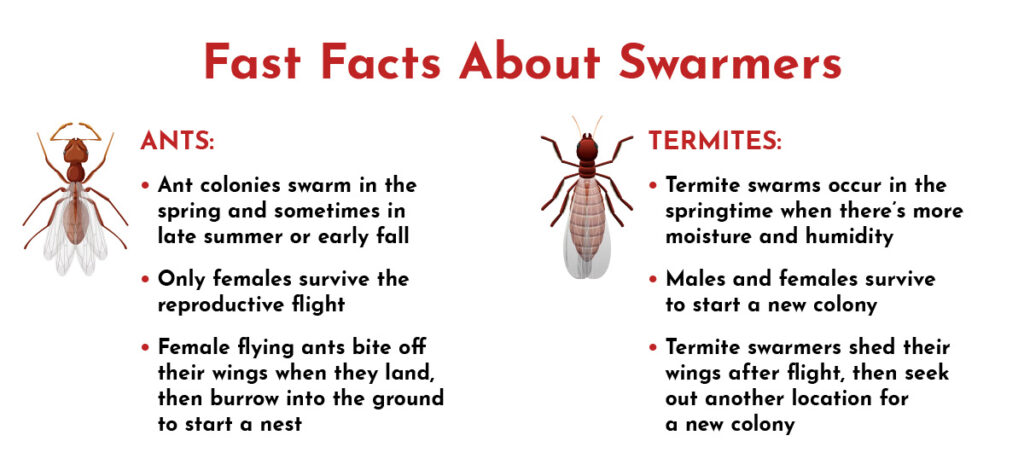
What are the Different Types of Termite Treatments?
Non – Chemical Treatments
Some ways to keep termites out do not involve the application of insecticides. For example:
- One such method is a physical barrier, typically incorporated during construction.
- Steel mesh and sands of particular sizes have been shown to perform effectively as physical barriers.
Biological control agents (nematodes and fungi) have demonstrated some success, particularly in laboratory settings.
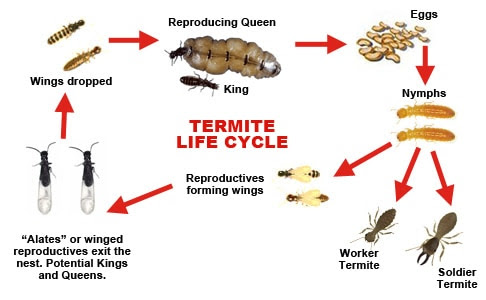
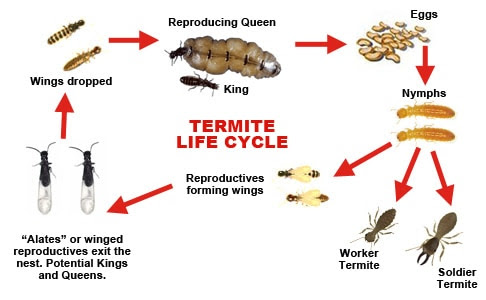
Chemical Treatments
Before a company can sell or distribute any pesticide in the United States, other than certain minimum risk pesticides, EPA must review studies on the pesticide to determine that it will not pose unreasonable risks to human health or the environment.
Approved treatments include:
- Liquid soil-applied termiticides.
- Termite baits.
- Building materials impregnated with termiticides.
- Wood treatments



